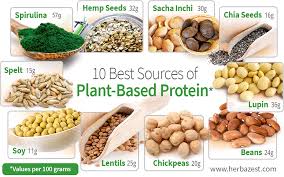What Are Plant-Based Meat Alternatives?
Plant-based meat alternatives are foods designed to mimic the taste, texture, and appearance of traditional meat but are made entirely from plants. Think burgers, sausages, nuggets, or even “steak” that sizzle on the grill, yet no animals were involved. These products cater to vegetarians, vegans, flexitarians, and anyone curious about sustainable eating. Unlike tofu or tempeh, which embrace their plant-based identity, these alternatives aim to fool your taste buds into thinking you’re eating meat. The secret? A clever mix of plant-based protein, fats, and flavorings that replicate the meaty experience.
The rise of plant-based protein has been meteoric. According to Statista, the plant-based meat market is projected to reach $35 billion by 2030. Why? Consumers are prioritizing health, sustainability, and ethics without sacrificing flavor. Whether it’s a Beyond Burger at a barbecue or Impossible Nuggets at a fast-food chain, plant-based protein is everywhere.
Why Choose Plant-Based Protein?
So, why swap your steak for a plant-based patty? It’s not just about jumping on the vegan bandwagon. Plant-based protein offers tangible benefits that appeal to everyone, from fitness buffs to eco-warriors. Let’s break it down.

Health Benefits of Plant-Based Protein
Plant-based proteins are often lower in saturated fats and cholesterol than traditional meat, making them heart-friendly. A 2023 study in The American Journal of Clinical Nutrition found that swapping red meat for plant-based protein reduced LDL cholesterol by 10%. They’re also packed with fiber, vitamins, and minerals, which meat lacks. For example, a Beyond Meat patty has 20 grams of protein and 3 grams of fiber—try getting that from a beef burger!
However, not all plant-based proteins are created equal. Some products are high in sodium or processed ingredients, so reading labels is key. Want to explore more about plant-based diets? Check out our guide to vegan nutrition.
Environmental Impact of Plant-Based Meat
Meat production is an environmental heavyweight, contributing 14.5% of global greenhouse gas emissions, per the FAO. Plant-based protein, on the other hand, is a featherweight champ. Producing a plant-based burger uses 75% less water and 90% less land than a beef burger, according to a 2022 Oxford University study. Plus, it generates fewer emissions, helping combat climate change. If you’re passionate about sustainability, plant-based protein is a delicious way to make a difference.
Read more: Best 5 Low-Code Platforms for (2025)
Ethical Considerations
For many, plant-based protein is about compassion. Raising animals for food often involves practices that don’t sit well with modern consumers. By choosing plant-based meat, you’re supporting a food system that prioritizes animal welfare. It’s a small choice with a big impact—fewer animals in factory farms and more focus on sustainable agriculture.
How Are Plant-Based Meats Made?
Ever wondered how a pile of peas becomes a juicy “steak”? The process is equal parts science and culinary wizardry. Let’s pull back the curtain.
Key Ingredients in Plant-Based Protein
Plant-based meats rely on a handful of superstar ingredients:
-
Pea Protein: A high-protein base that mimics meat’s texture.
-
Soy Protein: Another protein powerhouse, often used in tofu-based products.
-
Wheat Gluten: Gives that chewy, meaty bite (think seitan).
-
Coconut or Canola Oil: Adds juiciness and fat-like mouthfeel.
-
Beet Juice or Heme: Creates that “bleeding” effect and umami flavor.
-
Natural Flavorings: Spices, yeast extracts, and more for authentic taste.
These ingredients are blended, extruded, and shaped to create everything from patties to ground “beef.” Curious about plant-based cooking? Try our vegan burger recipe.
The Science Behind the Sizzle
The magic happens through high-moisture extrusion, a process that aligns plant proteins into fibrous structures resembling muscle tissue. Add in flavor compounds like heme (a molecule found in plants and meat) for that grilled taste, and you’ve got a plant-based protein that fools even die-hard carnivores. Companies like Impossible Foods use fermentation to produce heme, while Beyond Meat focuses on pea protein for a cleaner label.
Read more: 10 Best Vegan Protein Powders in 2025, Per Dietitians | SELF
Popular Plant-Based Protein Brands
The plant-based protein market is bursting with brands, each with its own spin. Here are the heavy hitters:
|
Brand |
Signature Product |
Key Feature |
|---|---|---|
|
Beyond Meat |
Beyond Burger |
No soy, gluten, or GMOs |
|
Impossible Foods |
Impossible Burger |
Heme for meaty flavor |
|
MorningStar Farms |
Incogmeato Nuggets |
Budget-friendly, widely available |
|
Quorn |
Mycoprotein Fillets |
Unique mushroom-based protein |
|
Lightlife |
Plant-Based Ground |
Simple ingredients, versatile |
These brands are available at major retailers like Walmart and Kroger, making plant-based protein accessible to all. Want to try them? Check out our plant-based grocery guide.
Plant-Based Protein vs. Traditional Meat
How does plant-based protein stack up against the real deal? Let’s compare.
Taste and Texture Comparison
Thanks to advances in food tech, plant-based meats are scarily close to the real thing. Beyond Burgers sizzle and brown like beef, while Impossible Nuggets have that crispy, juicy bite. Still, some folks notice a slight “planty” aftertaste in certain brands. Blind taste tests, like one by Consumer Reports in 2023, show 70% of participants couldn’t tell the difference. Not bad for a bunch of peas!
Nutritional Differences
Here’s a quick nutritional showdown (per 4 oz serving):
|
Nutrient |
Beef Burger |
Beyond Burger |
Impossible Burger |
|---|---|---|---|
|
Calories |
295 | 230 | 240 |
|
Protein |
26g |
20g |
19g |
|
Fat |
20g |
14g |
14g |
|
Saturated Fat |
9g |
5g |
8g |
|
Fiber |
0g |
3g |
3g |
|
Sodium |
80mg |
390mg |
370mg |
Plant-based proteins win on fiber and lose on sodium. For a deeper dive, read our nutrition comparison post.
Cost Analysis
Plant-based meats are pricier than conventional meat, with a Beyond Burger costing $1.50–$2 per patty compared to $1 for beef. However, prices are dropping as production scales. Bulk buys at Costco or Aldi can save you a bundle.

Challenges of Plant-Based Meat
Plant-based protein isn’t perfect. Some challenges include:
-
Cost: Still more expensive than traditional meat.
-
Processing: Highly processed ingredients raise health concerns.
-
Accessibility: Not always available in rural areas or developing countries.
-
Perception: Some view it as “fake” or less satisfying.
Despite these hurdles, innovation is addressing them. Lab-grown meat and hybrid products (part plant, part animal) are on the horizon, blending affordability and authenticity.
Read more: The 9 Best Vegan Protein Powders, Reviewed and Tested
How to Cook with Plant-Based Protein
Cooking plant-based protein is a breeze, whether you’re a pro chef or a microwave maestro. Here are some tips:
-
Grill It: Brush with oil and grill for 3–4 minutes per side for that charred flavor.
-
Pan-Fry: Use medium heat to get a crispy exterior without drying it out.
-
Season Liberally: Plant-based meats love bold spices like smoked paprika or garlic powder.
-
Mix It Up: Use plant-based ground in tacos, lasagna, or chili for versatility.
Try our plant-based taco recipe for a quick weeknight meal!
The Future of Plant-Based Protein
The plant-based protein industry is just getting started. By 2035, analysts predict 20% of global protein consumption will come from alternatives. Innovations like 3D-printed plant-based steaks, AI-designed flavors, and affordable production methods are paving the way. Fast-food giants like McDonald’s and KFC are doubling down, with plant-based options now on menus worldwide. Even lab-grown meat, which blends plant and cultured cells, is gaining traction. The future? A world where “meat” doesn’t mean animals—it means choice.
Here are the key advantages of plant-based meat alternatives:
-
Health Benefits:
-
Lower in saturated fat and cholesterol
-
Rich in fiber and essential nutrients
-
May reduce risk of heart disease and certain cancers
-
-
Environmental Impact:
-
Uses fewer natural resources (land, water)
-
Produces fewer greenhouse gas emissions
-
Less contribution to deforestation
-
-
Animal Welfare:
-
Cruelty-free, no animals harmed or killed
-
Appeals to ethical consumers
-
-
Dietary Inclusivity:
-
Suitable for vegans, vegetarians, and people with food restrictions
-
Often gluten-free and allergen-conscious options available
-
-
Food Innovation & Variety:
-
Encourages creativity in food tech
-
Expands options for healthy and sustainable diets
-
Here’s a description of each disadvantage of plant-based meat alternatives in simple terms:
-
Highly Processed:
Most plant-based meats go through a lot of industrial processing. They include things like binders, flavor enhancers, colorings, and preservatives to make them look and taste like real meat. This processing can reduce the overall nutritional value and raise health concerns if eaten in excess. -
Nutrient Gaps:
While they offer protein, they usually don’t naturally have important nutrients like Vitamin B12, iron (especially heme iron), and zinc, which are naturally abundant in animal meat. Without these, people might need supplements or fortified foods. -
Price:
Plant-based meats often cost more than regular meat. This makes them less affordable for many people, especially in regions where plant-based food is still new or not mass-produced. -
Taste & Texture:
Even though plant-based meats are improving, many people still feel they don’t perfectly match the taste, juiciness, or chewiness of real meat. This can be a dealbreaker for meat lovers. -
Allergens:
Some products are made from soy, wheat gluten, or pea protein, which are common allergens. This limits who can eat them, especially people with specific dietary restrictions.
-
-
FAQs About Plant-Based Protein
1. Is plant-based protein healthier than meat?
Plant-based protein is often lower in saturated fat and cholesterol, with added fiber. However, some products are high in sodium or processed ingredients. Check labels and balance with whole foods for optimal health.
2. Does plant-based meat taste like real meat?
Modern plant-based meats, like Beyond or Impossible, closely mimic meat’s taste and texture. Some have a slight plant-based aftertaste, but most people can’t tell the difference in blind tests.
3. Is plant-based protein sustainable?
Yes! Plant-based meat uses less water, land, and emissions than animal meat. For example, a plant-based burger produces 90% fewer greenhouse gases than beef, making it eco-friendly.
4. Can plant-based protein meet my protein needs?
Absolutely. Most plant-based meats offer 15–20 grams of protein per serving, comparable to beef or chicken. Pair with legumes or grains for a complete protein profile.
5. Are plant-based meats safe for kids?
Plant-based meats are generally safe for kids, providing protein and nutrients. However, high sodium and processed ingredients may be a concern. Consult a pediatrician for personalized advice.
Conclusion
Plant-based meat alternatives are more than a trend—they’re a revolution. From slashing your carbon footprint to boosting heart health, plant-based protein offers benefits for everyone, whether you’re 18 or 80. Sure, there are challenges like cost and processing, but the industry’s rapid innovation is closing those gaps. With brands like Beyond Meat and Impossible Foods leading the charge, and new tech like 3D-printed steaks on the horizon, the future of food is green, delicious, and exciting. Ready to try plant-based protein? Grab a burger, fire up the grill, and taste the difference. Leave your thoughts in the comments below!


Этот информативный текст отличается привлекательным содержанием и актуальными данными. Мы предлагаем читателям взглянуть на привычные вещи под новым углом, предоставляя интересный и доступный материал. Получите удовольствие от чтения и расширьте кругозор!
Получить дополнительные сведения – https://vyvod-iz-zapoya-1.ru/